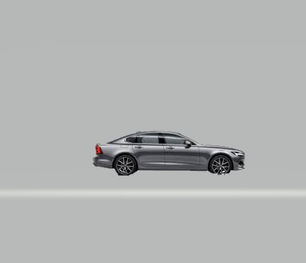INST362 - SAVVY UX TEAM 12

REPORT-OUT: MAKE-A-THON PROCESS AND PRODUCTS
BACKGROUND:
As our team is focusing on the state of transportation on UMD campus, we have decided to look for ways to improve traffic conditions between pedestrians and vehicles. By narrowing our target idea, we have decided to design and create a pedestrian bridge for students/professors/staff to use. Through our individual research on different bridge designs and analyses, we intend to do research and test on those we have interviewed in the past and who walk around campus. Based on our findings, we brainstormed various features that may help to solve the problem of pedestrian and vehicular traffic. Therefore, we decided to create different 2D model prototypes to be tested as a storyboard and role-playing. By using this approach, we will test how effective our solution would be and our user's use of the bridge.

BRAINSTORMING AND PROTOTYPING:
We first began by brainstorming ideas for our prototype. One idea that we had was building a 3D model out of Legos or other materials. The challenge with this was that only one of the five members had Legos, and the scale and time to complete the prototype would be too time consuming. In addition, demonstrating the Lego build for the users to view would be difficult enough, let alone them not being able to physically interact with. From there, we decided to go with creating a 2D model. But before we began drawing, we did research on the different types of bridges, bridge designs, and different stairs and escalators. We also researched where and how these bridges were being implemented. One notable place that our member, Matthew C, discovered was the bountiful bridge system in Hong Kong. Here, there were practically bridges connecting throughout the city, allowing a steady flow of pedestrians and vehicles.
From these inspirations of the bridge system at Hong Kong, each of our five members created a 2D drawing of a potential pedestrian bridge, as displayed below.

CHOSEN 2D PROTOTYPE DESIGN
When deciding which of our sample 2D prototypes to use for testing, we looked for features that might be beneficial for both pedestrians and vehicle drivers. From our discussion, we chose this bridge design by Matthew C. as our 2D model prototype because this design not only allowed pedestrians to cross over the oncoming traffic with ease, it also provided them different options to cross from one sidewalk to the other. For example, the pedestrian could walk from one building to the other by crossing on the bridge. Another example would be the pedestrian climbing up the stairs/escalators, crossing the bridge, and either entering the building across or exiting the bridge via the stairs/escalators. If there is little to no oncoming traffic and the weather is fairly nice, the pedestrian can simply cross the road.

HOW WE PLAN TO TEST
Before we prepare for the usability testing with our users, some elements we have gathered include images of similar bridge/stair/escalator designs and photos to be used during our storyboard and role-play. Below are some of the images to be shown during the demonstration. The images also include several stairs/escalator designs, different views of the pedestrian bridge, and a final, more-refined drawing of the pedestrian bridge as a whole, all drawn by Matthew C. With these images, we hope to create several scenarios, involving traffic conditions, convenience, and weather, where the user can role-play through these images on a storyboard and be tested on whether they use the bridge or not, with each time the bridge used as an additional point in scoring.

FINAL 2D PROTOTYPE DRAWINGS
Below are several drawings by Matthew Chan to be used in storyboard telling and role-playing in the Usability Testing to come. The drawings include several stairs/escalator designs, different views of the pedestrian bridge, and a final, more-refined drawing of the pedestrian bridge as a whole.
THOUGHTS ABOUT TESTING
Since the prototype we want to test is of a large scale, physical construction project, we would need to find a way of testing our ideas in a feasible manner. We are unable to build a model that can physically be used by an audience to interact with, due to lack of building materials and current circumstances (The pandemic). We, therefore, feel the most effective way of testing our prototype is through the use of 2D models, story-boarding, and role-playing.
The main question we have on our minds while testing is whether or not students and staff members will use our idea. We know this is something that will be difficult to test without a physical model that can be used to actively show concrete evidence. We will try our best to create scenarios that will best simulate the experience a pedestrian might have when deciding whether or not to use our idea. Based on their answers and feedback, we will collect data and come to a conclusion on how we can improve the designs or if the idea might actually be a problem rather than a solution.


























